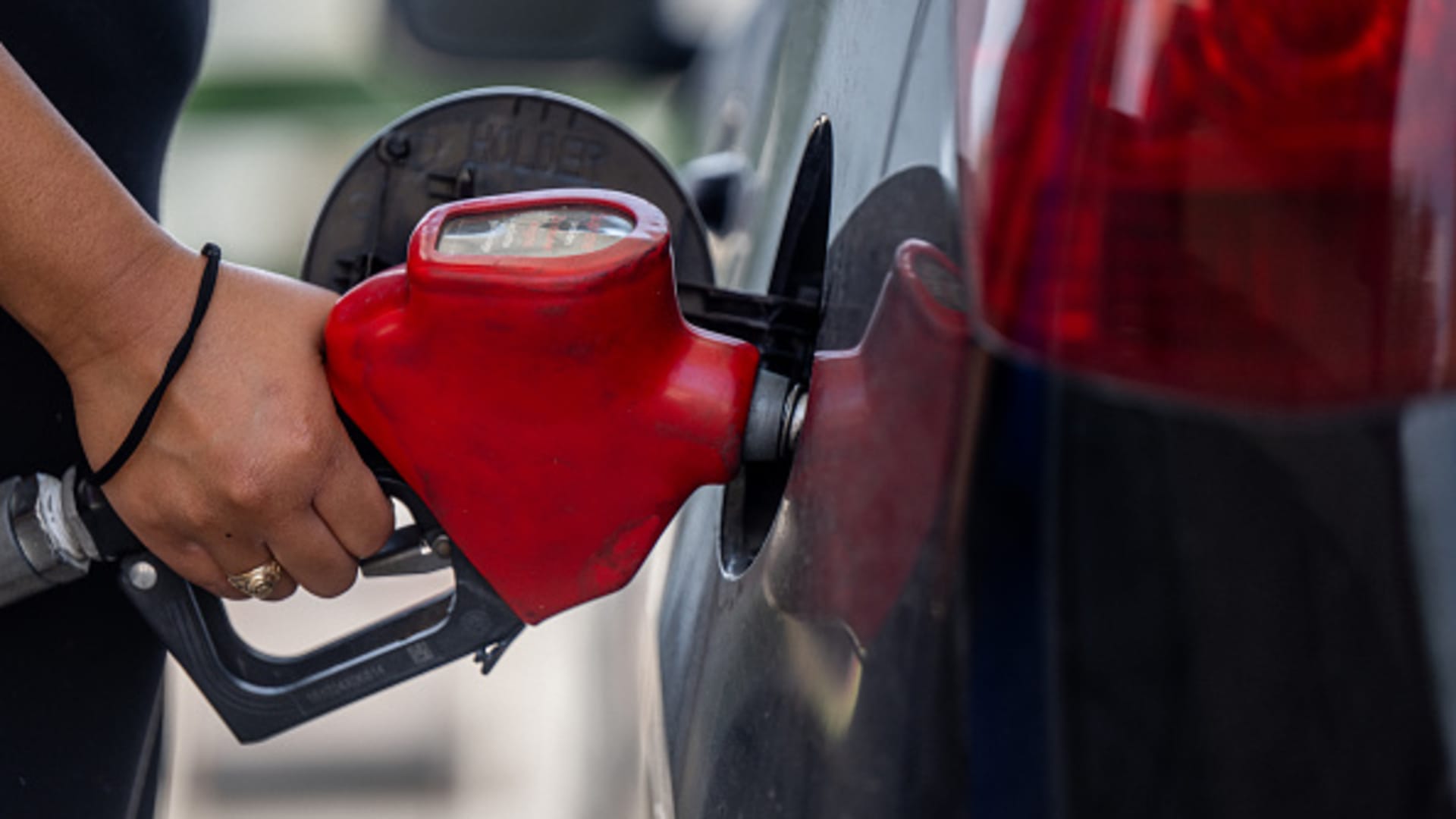Prices at the pump have retreated from June’s never-before-seen levels, but remain stubbornly high.
Some relief could be in sight. U.S. gasoline futures have dropped more than 11% this week, following a decline in oil prices as recession fears spark concerns around a drop-off in demand.
The national average for a gallon of gas stood at $4.75 Thursday, according to AAA. That’s down from the record $5.016 hit on June 14. But prices are still $1.62 higher than this time last year.
California has the highest state average at $6.185. The state’s Mono county is currently averaging $7.224 per gallon. South Carolina’s average of $4.257 is the lowest in the U.S.
Patrick De Haan, head of petroleum analysis at GasBuddy, said the national average could drop to between $4 and $4.25 by mid-August, barring a price spike in oil.
West Texas Intermediate crude, the U.S. oil benchmark, slid below $100 per barrel on Tuesday for the first time since mid-May. Oil makes up more than half the cost of gasoline, with refining expenses and taxes, among other things, also influencing prices.
On Thursday WTI traded around $99.51 per barrel, while gasoline futures stood 1.2% higher at $3.27 per gallon.
Prices at the pump tend to rise faster than they fall, as stations look to lock in profits in an ultra-competitive business.
“When [oil] prices trend up, stations are usually 2-5 days behind price increases until the upward trend stops,” noted De Haan. “That means for weeks they can be behind on raising prices. When prices do finally fall, they lower prices slowly to recapture margins from when prices rose. The longer and steeper upward trend, the slower stations likely lower prices when there’s finally relief,” he added.
But there were some positive signs of easing. De Haan counted 2,535 gas stations with prices below $3.99 on Thursday. Even though that’s a small fraction of 145,000 gas stations in the country, De Haan expects the number could double or triple in the next week or so.
Record prices have been a major contributor to rampant inflation, and a headache for the Biden administration ahead of November’s midterm elections.
President Joe Biden called on Congress in June to temporarily suspend the federal gas tax, but such a move has garnered little support from lawmakers.
Looking forward, some Wall Street firms believe oil prices will regain prior highs, which would mean only temporary relief at the pump. Goldman Sachs is calling for Brent crude, the international oil benchmark, to hit $140 this summer. It traded at $101.81 Thursday. Meantime Citi has been an oil bear for some time, and on Tuesday said Brent could hit $65 by the end of the year should the economy tip into recession.
Other factors that could send gas prices higher again include a hurricane or any refining-related issues, with refineries already running near peak capacity.
Andy Lipow, president of Lipow Oil Associates, forecasts the national average will drop to $4.50. Without any major disruptions, prices could fall even further.
“If we can get through the next six weeks without a major hurricane, we are looking at $4.40,” he said.
